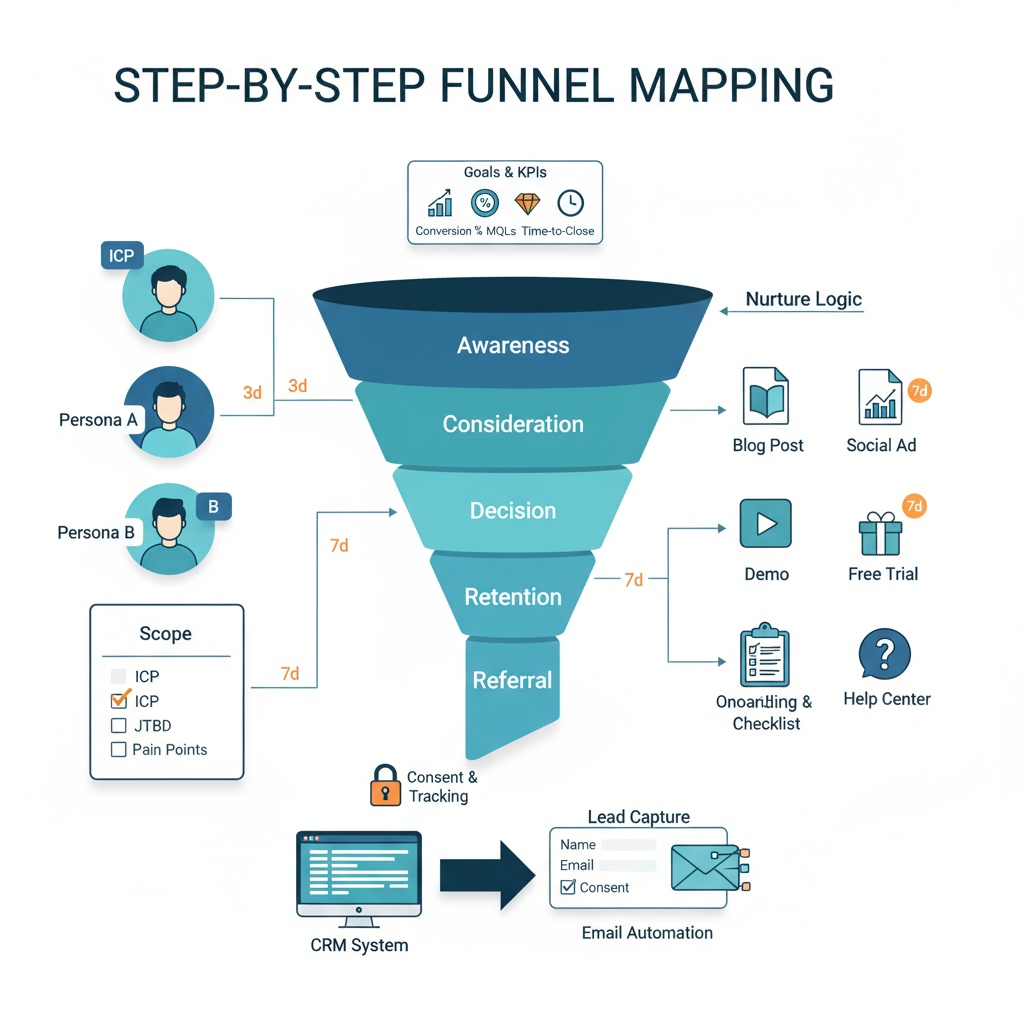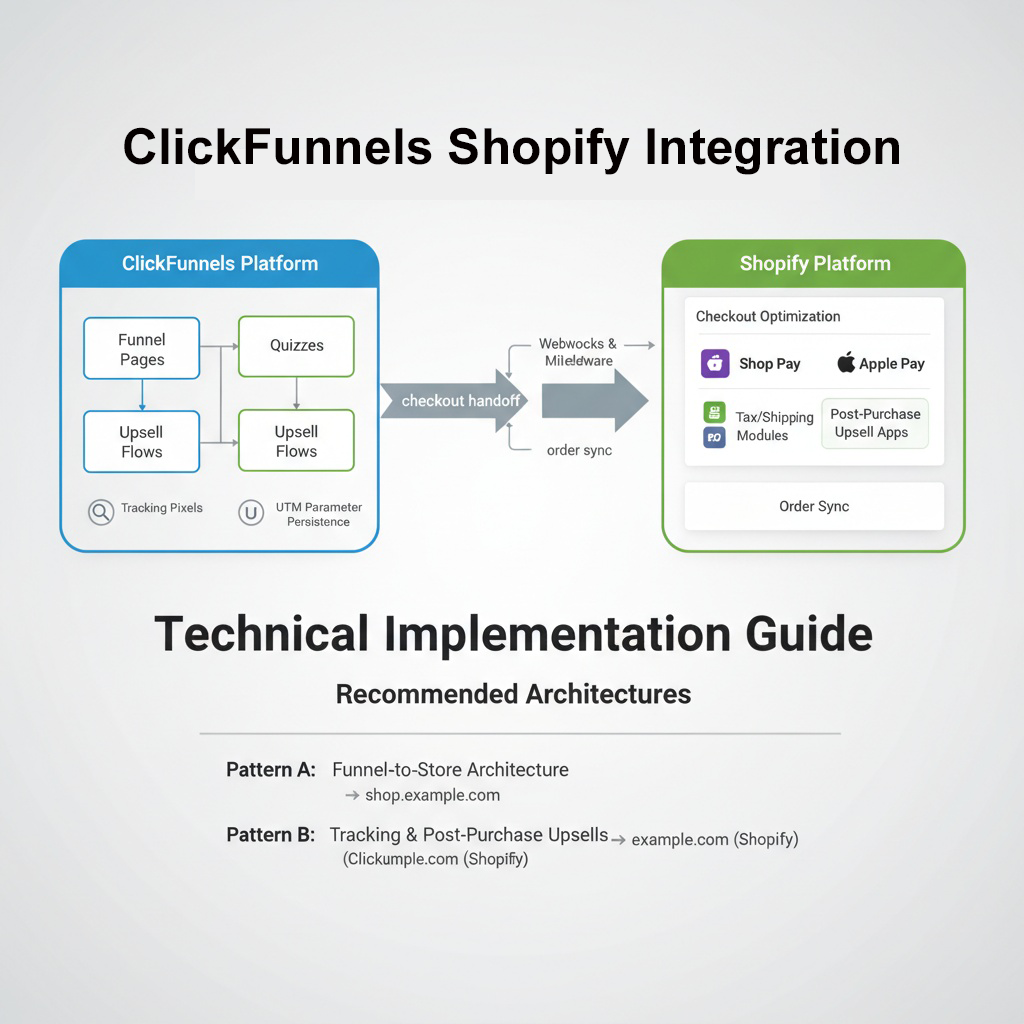One Funnel Away Challenge Review: What It Is, How It Works, Curriculum, Cost, Pros/Cons, and Top Alternatives
The One Funnel Away Challenge is a 30‑day ClickFunnels program that walks beginners through building and launching a first, working sales funnel. This guide is a practical, unbiased overview—not a sales page—built to help you decide if this sprint-style bootcamp fits your goals, budget, and learning style.
You’ll get plain‑English answers to what the One Funnel Away Challenge is, how the daily missions function, what the curriculum covers week by week, what it costs in total (including tools), and what realistic outcomes look like for first‑time funnel builders.
What to expect in this guide
What is the One Funnel Away Challenge? A clear definition and origin story
- How it works: daily structure, tools required, support, and tracks for different product types
- Curriculum breakdown: belief week through launch, including copy, offers, and funnel assembly
- Cost and inclusions: base price, upsells, software, and refund policies
- Time commitment: sample schedules and prerequisites for momentum
- Realistic outcomes: milestones to aim for and common roadblocks to avoid
- One Funnel Away Challenge review: balanced pros and cons for beginners
- Who should take it (and who shouldn’t): fit by business model and experience
- Preparation tips: assets to line up before you enroll
- Practical alternatives: free/low‑cost courses, platform‑agnostic stacks, and books
- Mini ClickFunnels review for context
- Decision checklists and FAQs for fast, confident selection
Who this guide is for
- Sales funnel training for beginners who want step‑by‑step, action‑based instruction
- Creators, course/coaching providers, affiliates, and local services with simple offers
- Builders weighing OFA vs. DIY vs. other bootcamps and seeking a neutral comparison
Expect clear scope, realistic expectations, and platform‑agnostic takeaways—even where this challenge leans on ClickFunnels.
What Is the One Funnel Away Challenge?
The One Funnel Away Challenge is a structured 30‑day, action-first online program from ClickFunnels that walks beginners through building and launching a live sales funnel. In plain terms, it is a guided sprint with daily instructions that move you from idea to a functioning funnel with a clear call to action, as outlined in this plain-English definition and overview on the Markinblog guide and the official ClickFunnels support page. Created by Russell Brunson, the challenge’s instructor lineup has evolved over time, including names like Julie Stoian, Stephen Larsen, and more recently Trey Lewellen, which is documented in independent reviews and official materials.
The purpose is straightforward. By the final day, you should have one working funnel, a basic packaged offer, and an initial traffic plan you can start executing. The emphasis is progress over perfection, so the experience favors building a minimum viable funnel you can launch, then refine. Many participants use it to validate a simple course, a coaching package, an affiliate offer, or a lead-generation funnel for a local service.
A quick case snapshot to ground expectations: Participant A, a first-time creator, packaged a 30‑page e‑book with a low-cost front-end offer. By week three, their opt‑in page and order page were live, and they recorded a first sale three days after launch. This is not a guarantee of profits, it is a realistic example of what a well-scoped, entry-level funnel can produce when you follow instructions and keep the scope tight.
Why beginners gravitate to it
If you are new to funnels, your biggest hurdles are usually blank-page paralysis, scattered tasks, and tech anxiety. The One Funnel Away Challenge addresses those friction points with small daily missions, prebuilt templates, and coaching touchpoints to keep you moving. You get a single path to follow, which limits distractions and reduces the risk of overcomplicating your first build.
- You do not need to invent your own sequence of steps, the program provides it.
- You avoid the endless research loop, the curriculum pushes you to publish.
- You gain a support network, so you are not troubleshooting alone.
How the One Funnel Away Challenge Works
The challenge runs for 30 days and typically includes a short pre-training period focused on mindset and fundamentals before the build begins, a structure confirmed by independent reviewers and ClickFunnels’ own support documentation. The core of the experience is a daily cadence designed to keep you shipping visible progress.
Here is the usual flow you can expect:
- Short video lessons that set the day’s objective, led by Russell Brunson and the coaching team
- Actionable missions that translate the lesson into tangible work on your funnel
- Workbooks, checklists, and templates to execute faster and avoid guesswork
- Group coaching or Q&A sessions, often live or recorded, to clarify sticking points and maintain momentum
- A private community where you can share drafts, gather feedback, and find accountability partners

The technology footprint is intentionally simple so you can focus on message and offer. You will need:
- A ClickFunnels account to assemble pages, connect checkout, and manage your funnel assets, as explained on the ClickFunnels support page
- An email service provider for opt‑ins and follow-up sequences
- A payment processor to accept orders if you are selling a product or service
- A registered domain and basic brand assets, such as a logo or color palette, to present a consistent experience
Support layers are built in. You get a private community for peer support, coaching for direction, workbooks for structure, and digital tools like funnel mapping resources that help you visualize the path from opt‑in to purchase. Third‑party reviews highlight the value of these layers for accountability and troubleshooting.
Tracks for different business types
The One Funnel Away Challenge allows you to align with a path that matches your business model. If you sell digital products, coaching, or courses, the expert focus centers on lead generation and conversion for information offers. If you sell physical products, the ecommerce focus prioritizes product pages, order bumps, and fulfillment considerations. You can read about these paths on the ClickFunnels support reference to choose the right starting point.
What you actually build by day 30
The output is a live minimum viable funnel that covers the essential steps from traffic to action. For many, that means a simple opt‑in page that feeds a welcome sequence and a sales page with a focused offer. Order bumps and upsells can be added if your product lends itself to a logical add‑on, although keeping scope narrow helps you launch on time.
- Coaches and consultants often build a “book a call” funnel with a short application
- Course creators tend to launch an opt‑in to a low-ticket offer with immediate access
- Affiliates commonly use a bridge page to warm up traffic before the merchant’s checkout
- Local services may use a lead magnet and follow-up sequence that leads to a service quote
Accountability and momentum mechanics
Momentum is engineered into the structure. Daily missions create a feedback loop where you watch a short lesson, complete a defined task, and report progress in the community. That loop matters more than long theory lectures because your funnel improves through iterations, not single perfect drafts.
Practical ways participants maintain velocity:
- Keep a single-source checklist of tasks for the current week, mark items done as you publish
- Share screenshots of copy, headlines, or page sections in the community for specific feedback
- Pair with an accountability partner at the start so you exchange updates at a set time each day
- Use small deadlines, for example, “opt‑in copy by tonight,” instead of sprawling goals
Common early questions answered
Can you join without your own product? Yes. Many participants validate ideas with a lead magnet, promote affiliate offers, or book discovery calls while shaping a final product. The official support guidance confirms that affiliates and testers can complete the challenge using these approaches.
Do you need ClickFunnels to finish? The program is designed around ClickFunnels’ templates, editor, and checkout, so following along is simplest inside that ecosystem as described in ClickFunnels’ support resources. That said, the underlying funnel principles and copy frameworks can transfer to other platforms if you are comfortable adapting the steps.
How technical is it? The level is beginner friendly. You will use drag‑and‑drop templates, copy-and-paste sections, and straightforward integrations. When you get stuck, the combination of coaching and community tends to resolve most issues without a developer.
The core components at a glance
| Component | What you do | Why it matters |
|---|---|---|
| Daily video mission | Learn a focused concept, then apply it immediately | Reduces overwhelm, turns ideas into shipped assets |
| Workbook and templates | Fill in prompts, customize layouts, publish drafts | Accelerates progress, eliminates blank-page blocks |
| Group coaching and Q&A | Get answers, refine messaging, fix bottlenecks | Keeps you moving, improves quality through feedback |
| Private community | Share work, find accountability partners, compare notes | Builds consistency, strengthens execution habits |
| Basic tool stack | Assemble pages, connect email and payments, set a domain | Enables a functional funnel you can launch and iterate |
As you move into the next section, we will unpack the precise flow of the challenge week by week, from the early belief and foundation work to the key build milestones that lead to your first live funnel. For readers who prefer a deeper third‑party explainer before diving in, the comprehensive Markinblog overview and Navid Moazzez’s balanced review provide helpful context alongside the official ClickFunnels support page.
Operationalizing the One Funnel Away Challenge: Deliverables, KPIs, and Iteration
Pre-work that de-risks Week 1
Treat the first 48 hours as a validation sprint rather than planning time. Produce three assets:
- Assumption map: list your top five beliefs about your buyer, problem, and willingness to pay; tag each as high or low certainty.
- Interview guide: ten questions to uncover pains, alternatives, and desired outcomes; schedule five 15-minute calls before Day 3.
- Offer sandbox: three different versions of your offer with varying guarantees, bonuses, and price anchors so you can test quickly.
Decision thresholds:
- If fewer than 3 of 5 prospects can articulate the same core pain in their own words, narrow your segment.
- If your bonus stack cannot be tied to eliminating a top-3 objection, replace it with a higher-friction remover such as a setup service or a template pack.
For deeper context on tasks and timelines, keep an open tab to this in-depth guide, then verify cohort mechanics on the ClickFunnels support page.
Week 1 in practice: Proof of audience and offer fit
Translate research into concrete targets. Deliverables by end of Week 1:
- Dream customer profile with a jobs-to-be-done statement, anti-persona, and 3 must-win outcomes.
- One-page offer sheet including promise, mechanism, bonuses, risk reversal, and a first-pass price range.
- A 200-word elevator pitch and a 10-question objection bank sourced from real conversations.
KPI targets to hit before advancing:
- 5 qualitative interviews completed, with at least two verbatim quotes matched to each offer promise.
- 20 outbound messages to potential buyers or partners, seeking discovery calls or pre-orders; aim for a 20 to 30 percent reply rate.
- If replies are below 15 percent, adjust the promise and lead with the strongest desired outcome, not features.
Week 2: Hook and story testing at small scale
Run low-cost validation on messaging before writing full pages.
- Draft 10 hooks and 3 storylines that ladder into your core promise. Use short-form posts, simple images, or one-screen landing tests to gather directional data.
- Deploy micro-tests: one-subject-line email to a small list, a social poll, and a lightweight landing page with a waitlist form.
- Aim for these signals: 2 to 5 percent click-through on a cold social test, 25 percent open rate on warm email, and 20 to 40 percent opt-in on a one-screen lead magnet page. Shortfalls point to either unclear problem framing or weak specificity.
Practical tools for inspiration and sanity checks are collected in this independent review, which also notes pacing considerations and common stalls.
Week 3: Funnel assembly with instrumentation baked in
Avoid building blind. Wire analytics and event names before polishing copy.
- Define your minimal path: squeeze page, sales or booking page, checkout, and thank-you with a simple order bump if you sell a paid offer.
- Instrument events: view, optin, salespageview, initiatecheckout, purchase, and bump_accept. Use consistent names so you can compare later if you switch tools.
- Write the checkout first to clarify offer, guarantees, and FAQs, then backfill supporting copy.
- Build one upsell or cross-sell that increases average order value without adding decision complexity. If someone buys a course, pitch a setup call. If they book a call, offer a paid discovery.
Healthy early signals:
- 25 to 45 percent opt-in on a tightly matched lead magnet.
- 1 to 5 percent purchase conversion on a cold mini-launch for a simple front-end product.
- 10 to 25 percent acceptance on a well-aligned order bump. If bumps underperform, check congruence and price gap.

Week 4: Launch cadence and a focused traffic plan
Work from a single-channel growth play to avoid dilution.
- Organic option: one educational thread or short video daily, one partner mention per week, and two community contributions that link to your lead magnet only when contextually relevant.
- Paid option: a $10 to $30 per day test for 5 to 7 days on a single audience; pause losers within 72 hours and iterate the hook that gets the best thumb-stop rate.
- Email option: a 5-email welcome series, including a how-it-works walkthrough, a case snapshot, objection handling, a soft pitch, and one re-engagement message.
Gate criteria to scale:
- If your opt-in cost is within target and your welcome email earns 30 percent open with 3 to 5 percent click, expand spend or outreach linearly. If you miss both, retest the hook from Week 2.
A practical ClickFunnels review for this sprint
This section functions as a mini clickfunnels review in the context of a 30-day build.
- Speed to assemble: Templates and native checkout shorten Week 3, which benefits beginners. Time saved here should be reinvested into testing copy and hooks.
- Trade-offs to watch: Page weight and SEO can lag compared to leaner, self-hosted stacks. Run PageSpeed Insights on the key pages and keep hero sections minimal.
- Data and portability: Export leads weekly. Document your event names for any future platform migration.
- Split testing: Use A/B testing for headline and hero above the fold first; only test one major element at a time to reach confidence with limited traffic.
If you plan to adapt lessons to different stacks, scan the platform guidance inside the ClickFunnels support page and cross-reference a platform-agnostic path like HubSpot Academy for fundamental funnel concepts.
Industry-specific implementation patterns
- Ecommerce: Lead with a problem-solving mini-guide or quiz to segment cold visitors. Use an order bump for a replenishable accessory and a post-purchase cross-sell that ships together to keep margins sound.
- Coaching and courses: Replace a complex VSL with a 15-minute clarity video and a live office-hours invite. Your order bump is a workbook or assessment scored on the call.
- Local services: Offer a diagnostic and a same-week scheduling incentive. Build in SMS reminders and a frictionless rebook link. The funnel goal is booked appointments, not long-form copy.
- B2B services: Borrow from account-based tactics. List 40 target companies, warm via content touchpoints, and drive to a one-page case summary with a calendar embed. Use LinkedIn posts to test messaging before paid distribution.
Budget, time blocks, and ROI modeling
Anchor the $100 entry fee inside a sober budget so surprises do not sink execution.
- Cash plan: $100 challenge fee, software after any trial period, a modest paid test budget if selected, and a domain plus email tool. Verify current software pricing and refund terms on the official pages before committing.
- Time plan: Reserve 60 minutes for content and 45 minutes for build tasks Monday to Friday, then a 2-hour Saturday sprint for tests and edits. Protect one evening for interviews or partner outreach.
- ROI checkpoints: Break even can come from as few as 3 to 10 sales on a front-end offer depending on price and ad spend. Track list growth, cost per lead, and average order value weekly to decide whether to iterate, raise price, or simplify.
Community, coaching, and accountability mechanics
Leverage the cohort infrastructure rather than treating it as a forum.
- Post a weekly scoreboard with your metrics and the single bottleneck you are working on; invite targeted feedback rather than general comments.
- Pair with an accountability partner who has a different skill strength. Copy-focused builders partner with an ops-focused peer to reduce blind spots.
- When you ask for reviews of your page, request a 5-minute Loom critique of only the first screen and headline. Iterate the most visible assets first.
Case snapshots to calibrate expectations
- Participant A, a solo creator, launched a simple ebook plus templates as a front-end offer. After 210 visits from niche Reddit and two small newsletter mentions, they saw a 36 percent opt-in and 3 sales at $29 within three weeks, then added a $9 bump that 22 percent accepted.
- Participant B, a yoga studio owner, used a free week pass funnel with SMS reminders. With local Facebook groups and a $12 per day ad test, they booked 18 trial visits in 10 days and converted 6 to memberships after adding a quick-start video between opt-in and booking.
- Participant C, a Shopify brand, used a quiz opt-in that matched shoppers to a starter bundle. Email flows accounted for the first five sales; a cross-sell on the thank-you page lifted average order value by 18 percent on a small sample.
When a different sales funnel training for beginners fits better
If platform-agnostic education suits your style, combine HubSpot Academy for foundational funnel topics and Google Digital Garage for digital marketing basics. Those who prefer WordPress or other stacks often pair Elementor and ConvertKit or use Leadpages with Stripe or PayPal to approximate the same flow. For unbiased comparisons of pacing, scope, and common hurdles, this in-depth guide and this independent review provide details beyond what a typical one funnel away challenge review covers, and the ClickFunnels support page lists any current cohort changes and access terms.
Beyond “what is the one funnel away challenge,” the next step is to pick your channel, define the single KPI that signals traction for your offer, and stage your first two tests so that Week 4 is execution, not scrambling.
Conclusion
Ultimately, the path is clear: if you’re starting from zero and want a working funnel in a month, this program delivers structured, accountable execution that gets you live.
It serves beginners, creators, and solopreneurs who are ready to ship and iterate. It is not optimized for complex builds, advanced teams, or anyone avoiding the ClickFunnels toolset and its costs.
The outcome is concrete: an MVP funnel online, list growth underway, and the operating rhythm to keep improving. Profit isn’t automatic; disciplined iteration and focused traffic turn your build into a business.
If the tool-centric route isn’t your fit, pick a platform-agnostic path, pair it with reputable free courses, and keep the same execution cadence. For sales funnel training for beginners, these principles transfer cleanly to WordPress, Shopify, Webflow, or Leadpages.
Prepare with intent: clarify your offer and audience, gather testimonials and visuals, set up domains, email, and payments, block 1–2 hours daily, and define success targets like your first 10–20 subscribers or sales.
Next steps are straightforward: enroll and commit if you have a simple offer and the time; pause and prep if your message is unclear; choose an alternative if you need open tooling or a tighter budget. Review the decision checklist, set your build calendar, and start.
In conclusion, treat this as a sprint that creates momentum you can compound. Engage fully, ship daily, measure weekly, and scale what works. Do that, and the One Funnel Away Challenge becomes the launchpad for a repeatable, strategic customer‑acquisition engine.





